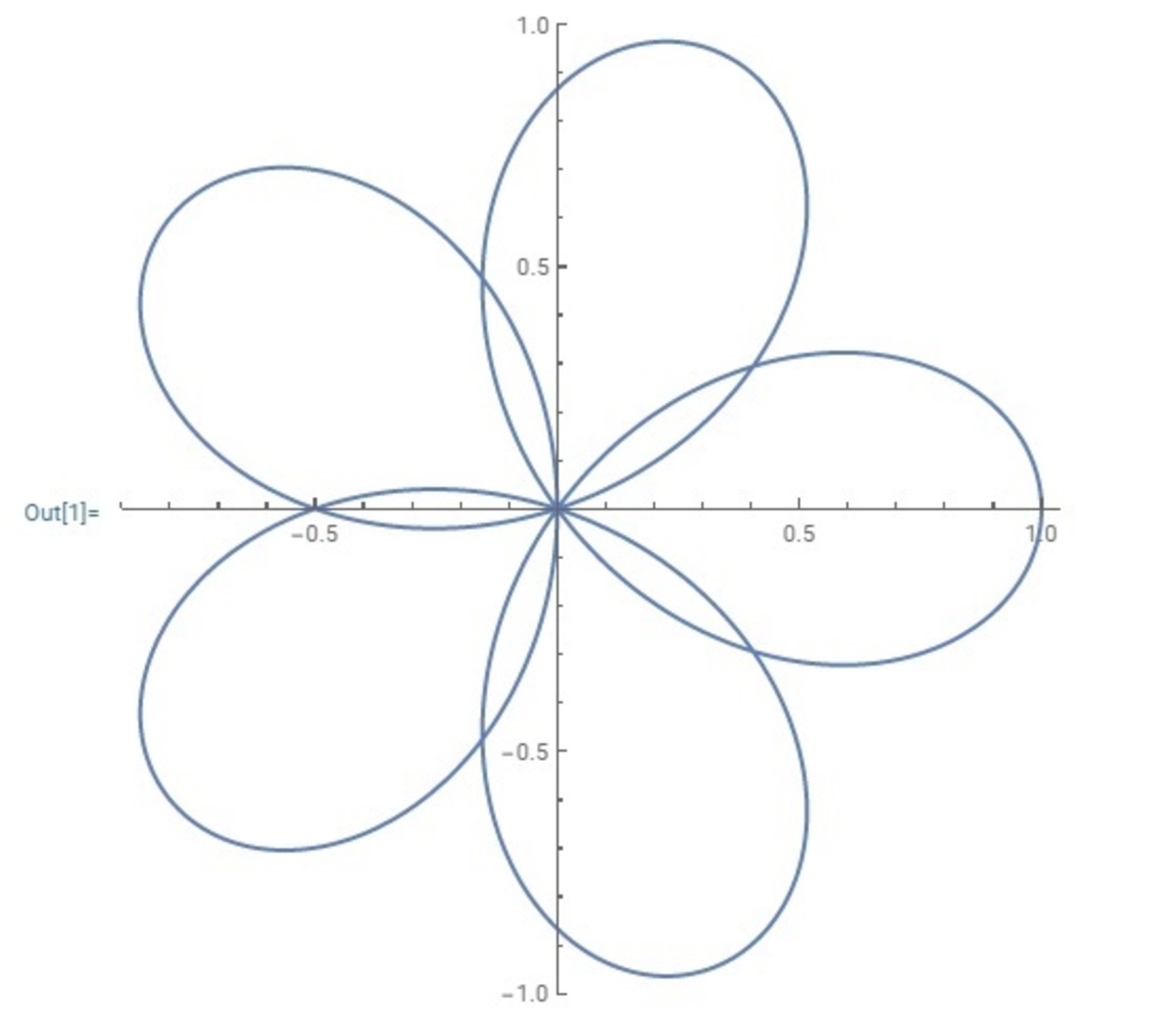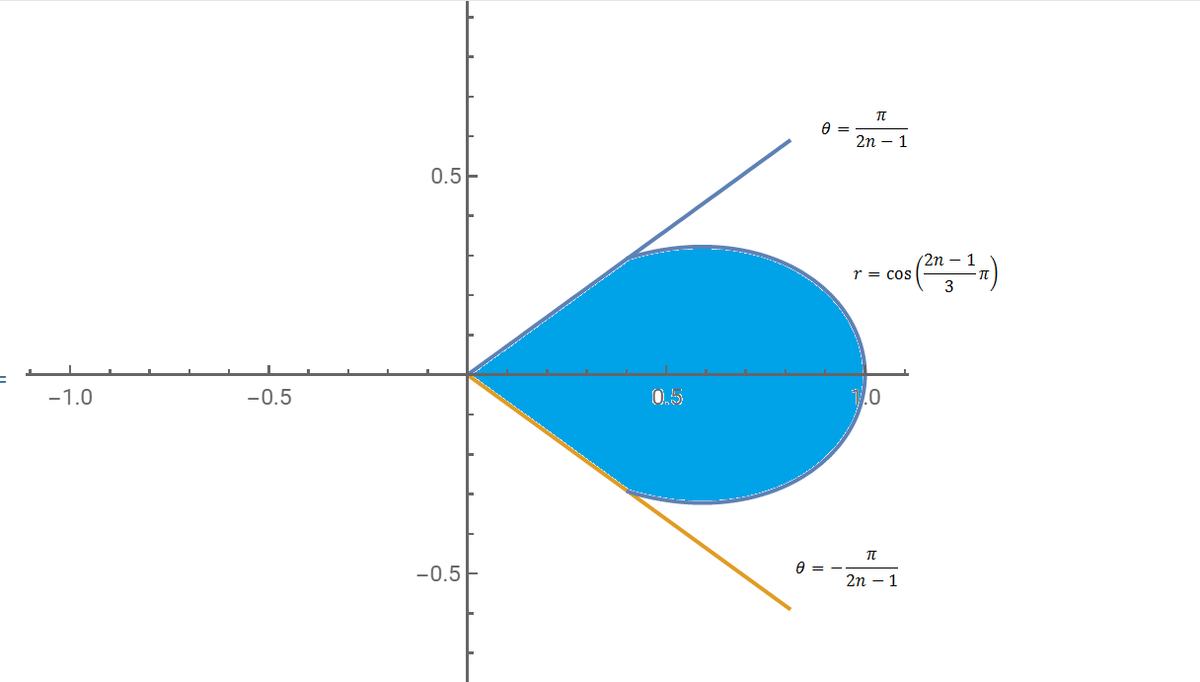Area of a Rose of 2021 Petals.
Find the area of the polar region R = { ( r , θ ) ∣ ∣ ∣ ∣ ( 0 ≤ r ≤ cos ( 3 2 0 2 1 θ ) or cos ( 3 2 0 2 1 θ ) ≤ r ≤ 0 ) and − 2 3 π ≤ θ ≤ 2 3 π } . Round your answer to two decimal places.
The answer is 2.22.
This section requires Javascript.
You are seeing this because something didn't load right. We suggest you, (a) try
refreshing the page, (b) enabling javascript if it is disabled on your browser and,
finally, (c)
loading the
non-javascript version of this page
. We're sorry about the hassle.
We are going to solve this problem in a more general context. Assume that in the definition of R we replace 2021 by a number of the form 2 n − 1 , where n > 2 and 2 n − 1 is not a multiple of 3. Then the region R is going to be the region bounded by the rose defined by r = cos ( 3 2 n − 1 θ ) . Under the assumptions made before that 2 n − 1 must be an odd number greater than or equal to 5 and not a multiple of 3, the rose will have 2 n − 1 identical petals. Additionally, the whole curve is traced when − 2 3 π ≤ θ ≤ − 2 3 π , and two contiguous petals overlap.
For example, we include below the graph of r = cos 3 5 θ To avoid overlapping, we can consider the whole region enclosed by the rose as the union of
2
n
−
1
non-overlapping subregions of the form given by the following picture
To avoid overlapping, we can consider the whole region enclosed by the rose as the union of
2
n
−
1
non-overlapping subregions of the form given by the following picture

Then the area of the region R enclosed by the rose is A = ( 2 n − 1 ) ∗ 2 1 ∫ − 2 n − 1 π 2 n − 1 π cos 2 ( 3 2 n − 1 θ ) d θ = 8 3 3 + 2 π . The result that we have obtained does not depend on n , therefore, this will be the area of R in the case that 2 n − 1 = 2 0 2 1 . Then the answer is 2 . 2 2 .